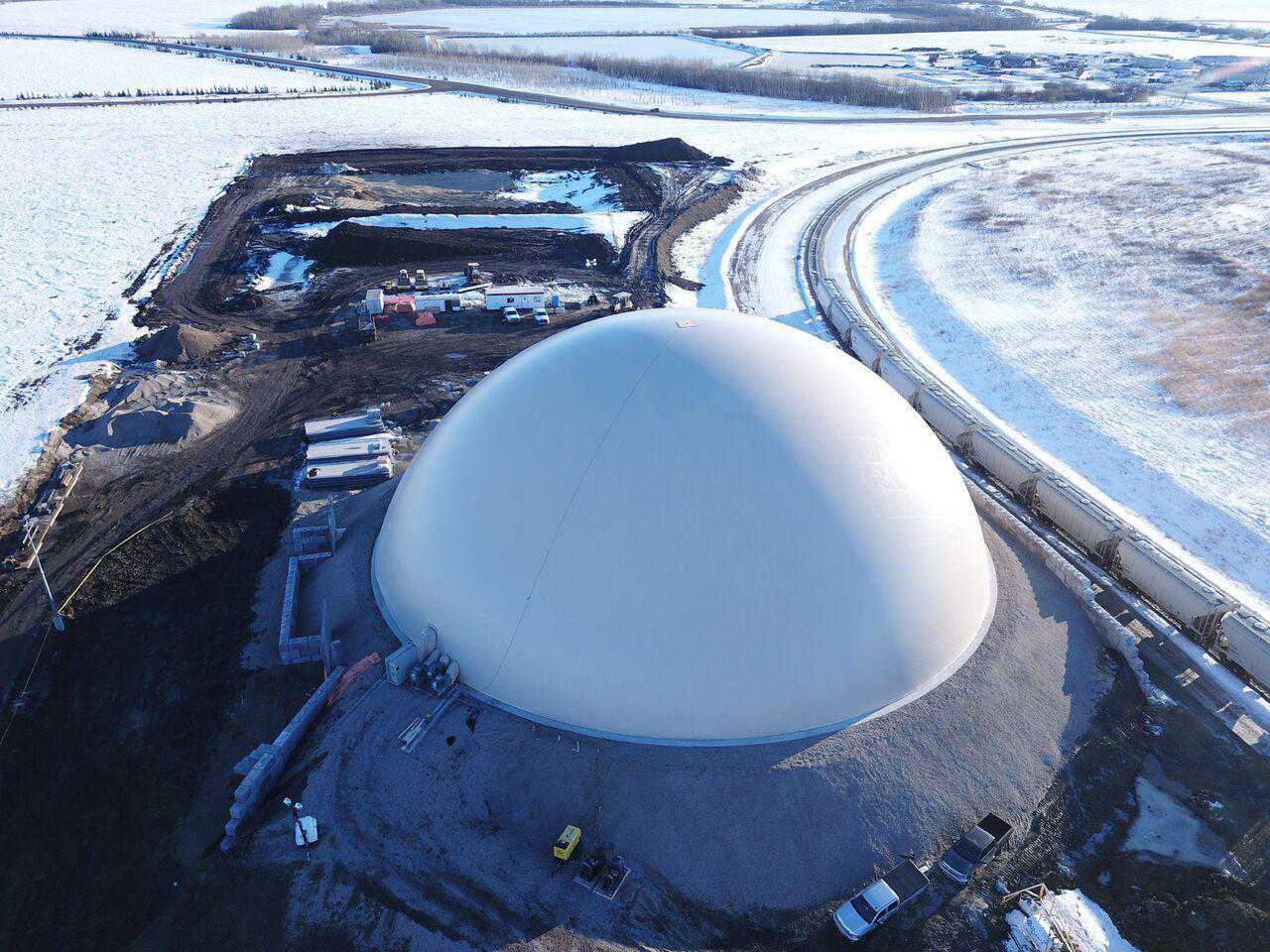It’s a record high for Grande Prairie, Alberta — a whopping 45 degrees Fahrenheit (7ºC). That may sound cold for a construction project, but considering it was -12ºF (-24ºC) the week before, it’s practically balmy. A perfect day to inflate a giant, 182-foot diameter Monolithic Dome.
“We were lucky to get a break in the weather,” said Andrew South, General Manager of South Industries. His crew methodically attached the 182-foot (55.5m) diameter by 70-foot (21.3m) tall Airform membrane to the footing. Everything is double checked and it’s ready to inflate — except for the wind.
Monolithic president, Mike South, is on site filming with his drone. The first pass went well, until he tried to bring it back. The wind was blowing it away. He had to drop the drone very low, then it could limp back. Clearly, the inflation needs to wait for the wind to calm down.
This Monolithic-made Airform is the largest diameter to use the new Transverse patterning process. Instead of fabric seams converging to a point at the apex, the seams run horizontally to the ground from one side of the dome to the other. This new pattern is possible because the dome is not quite a hemisphere. The Transverse membrane eliminates the “top” where seams come together.
When complete, the dome will store up to 40,000 metric tonnes of frac sand. Oil is the primary industry in the area and frac sand is a vital component to squeeze oil from the ground. Construction cannot stop even though winter is bitterly cold.
Fortunately, once the membrane is inflated and the first layer of polyurethane foam applied, various propane and diesel heaters keep the interior around 45ºF (7ºC). A heated out-building will surround the airlock and concrete pump. Finishing the foam, steel and concrete is far easier and safer than traditional construction in the cold.
It’s 8:50 p.m. on December 12, 2017, the wind is calm. Time to turn on the fans. The membrane inflates, but the gravel base is allowing too much air to escape. There’s enough pressure to leave the Airform inflated until morning. The crews return the next day and lay down plastic inside. With the gravel covered the target pressure is reached. Within a few days, the first layer of foam is applied, the heaters are turned on and construction continues without delays.
In a couple weeks the temperature drops to a bone chilling -40ºF (-40ºC, yeah, it’s the same for both). Work continues normally inside the dome. “We can build domes in extreme temperatures,” says Andrew South. “We have the skills and expertise to handle those conditions.”
Andrew reports the dome will be structurally complete by January 30, 2018, including the sub-grade tunnels and foundation. “That’s only 14 weeks from the project start,” says Andrew. “The additional mechanical systems will be fully installed a few weeks later and the facility will be operational.”
Watch a video of the inflation below:
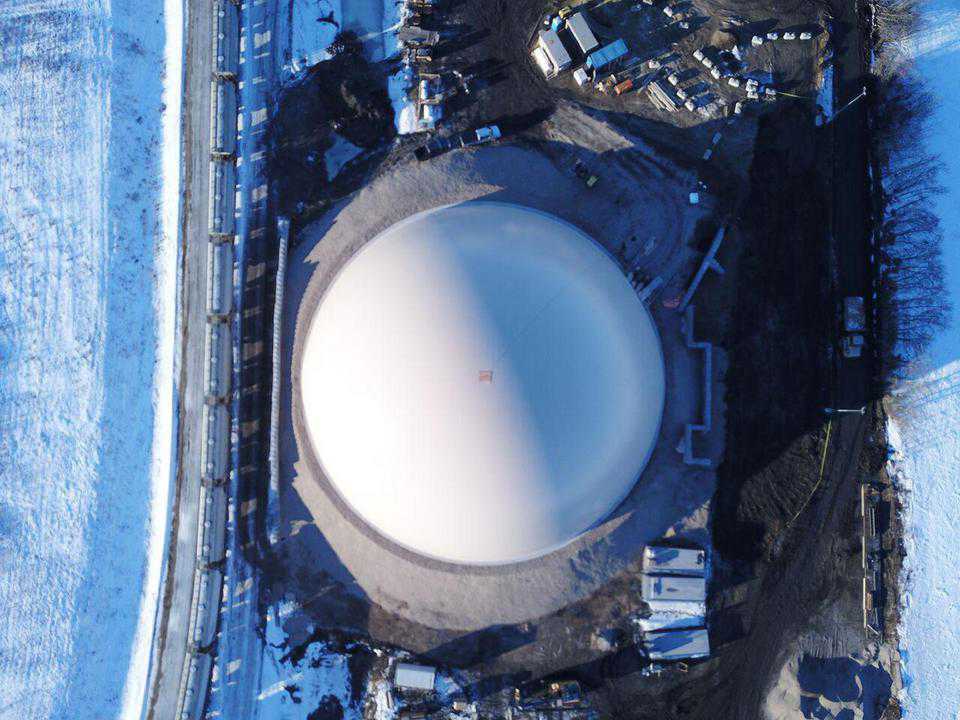
An aerial view of the inflated dome. (Mike South)
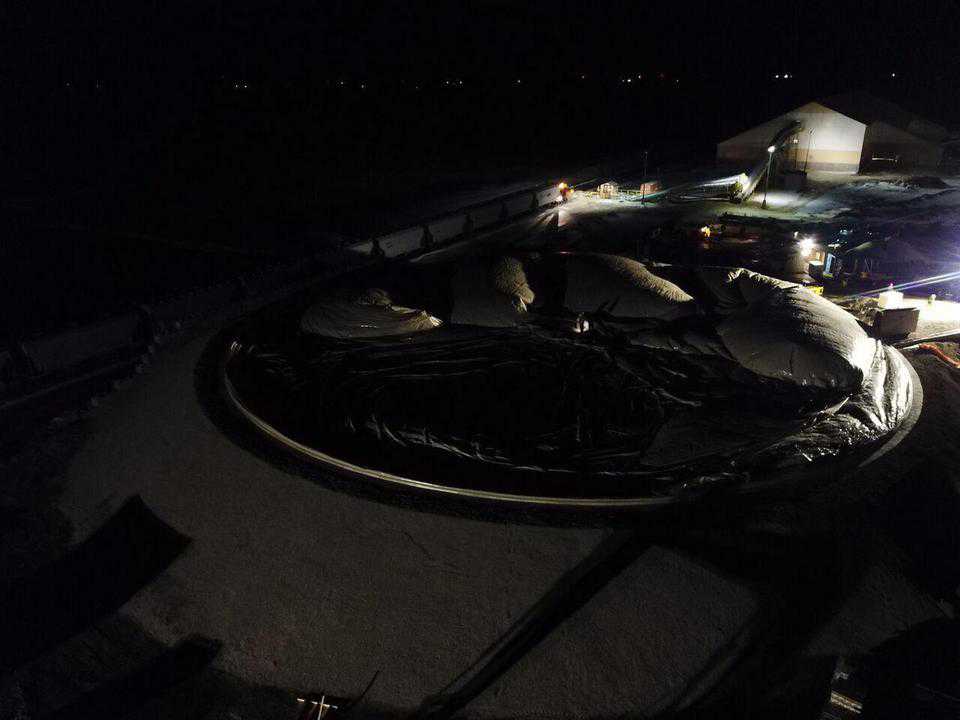
The start of the inflation process. (Mike South)
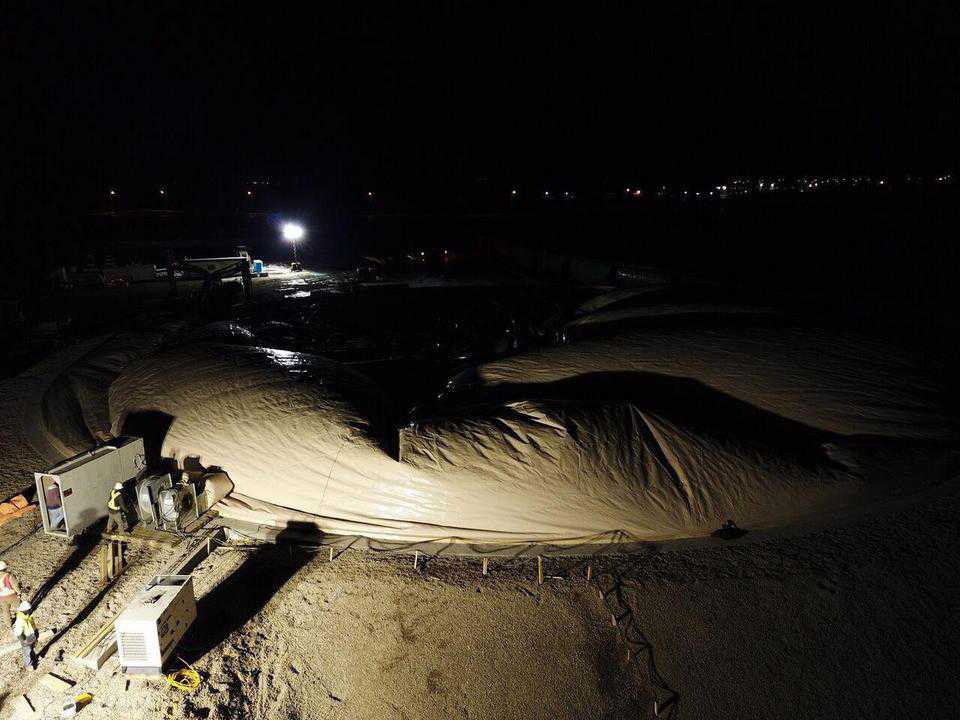
Fans that inflate the Airform can be seen during the inflation. (Mike South)
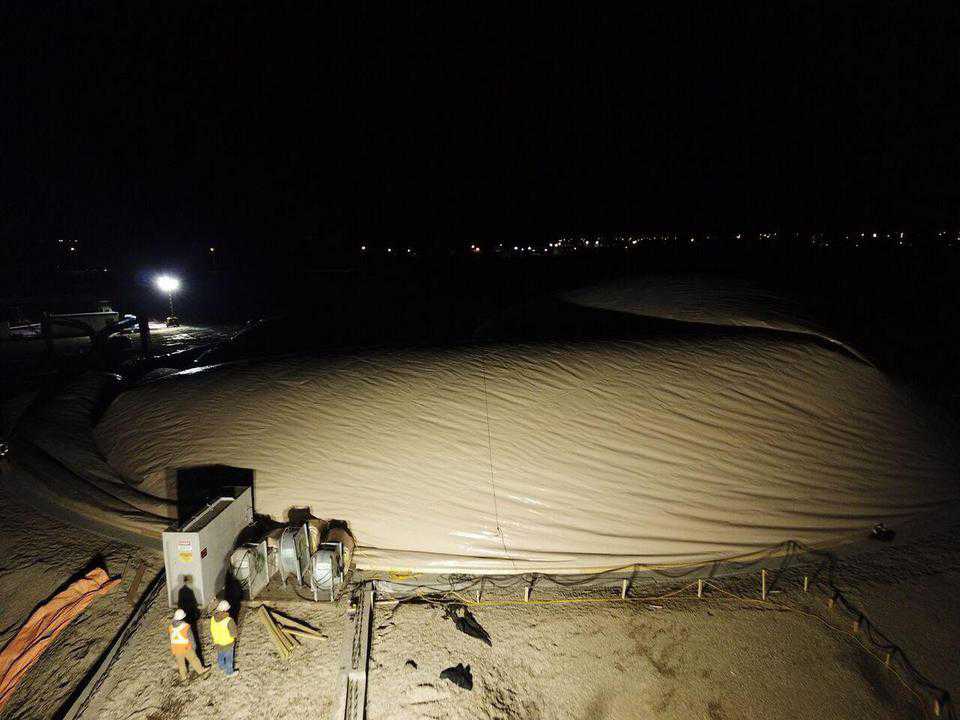
The Airform mid-inflation. (Mike South)
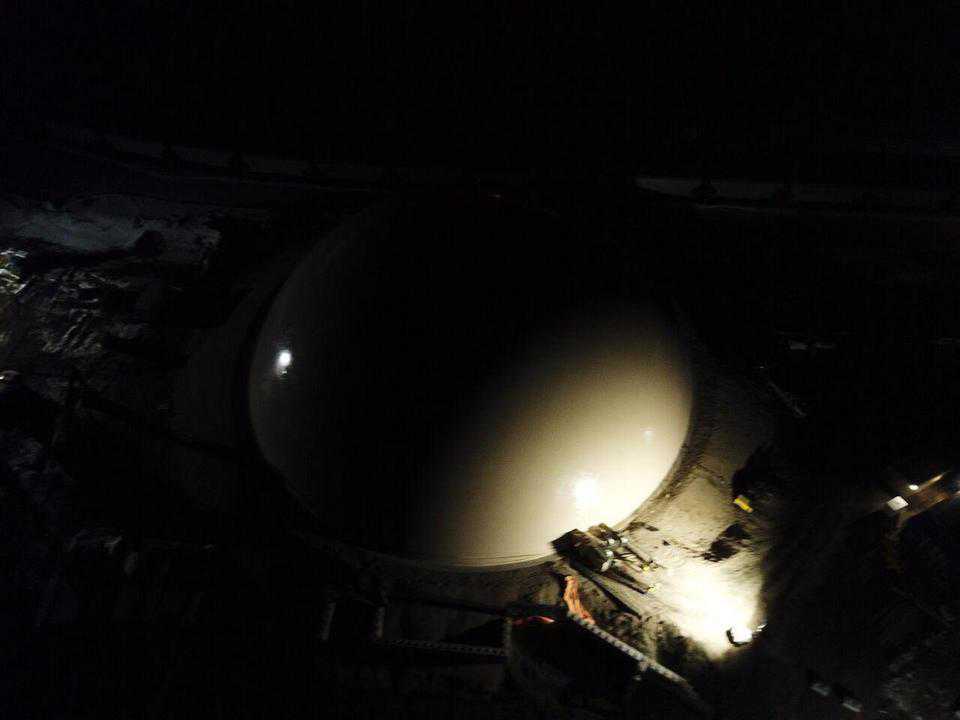
The Airform at peak inflation. (Mike South)
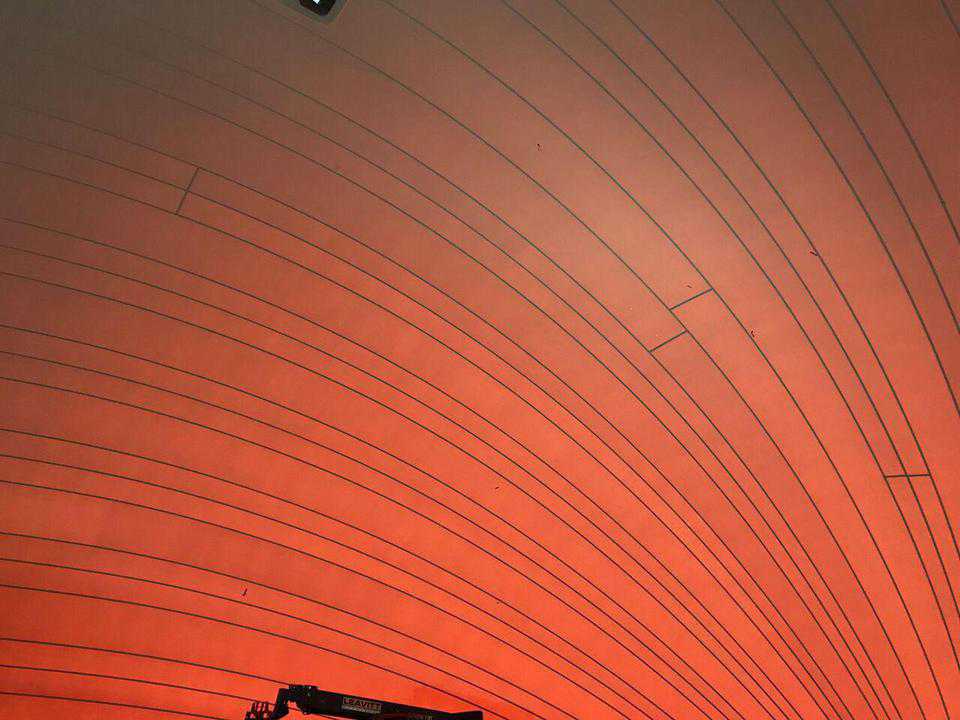
A view from the inside of the Airform, showing the transverse pattern. (Mike South)
